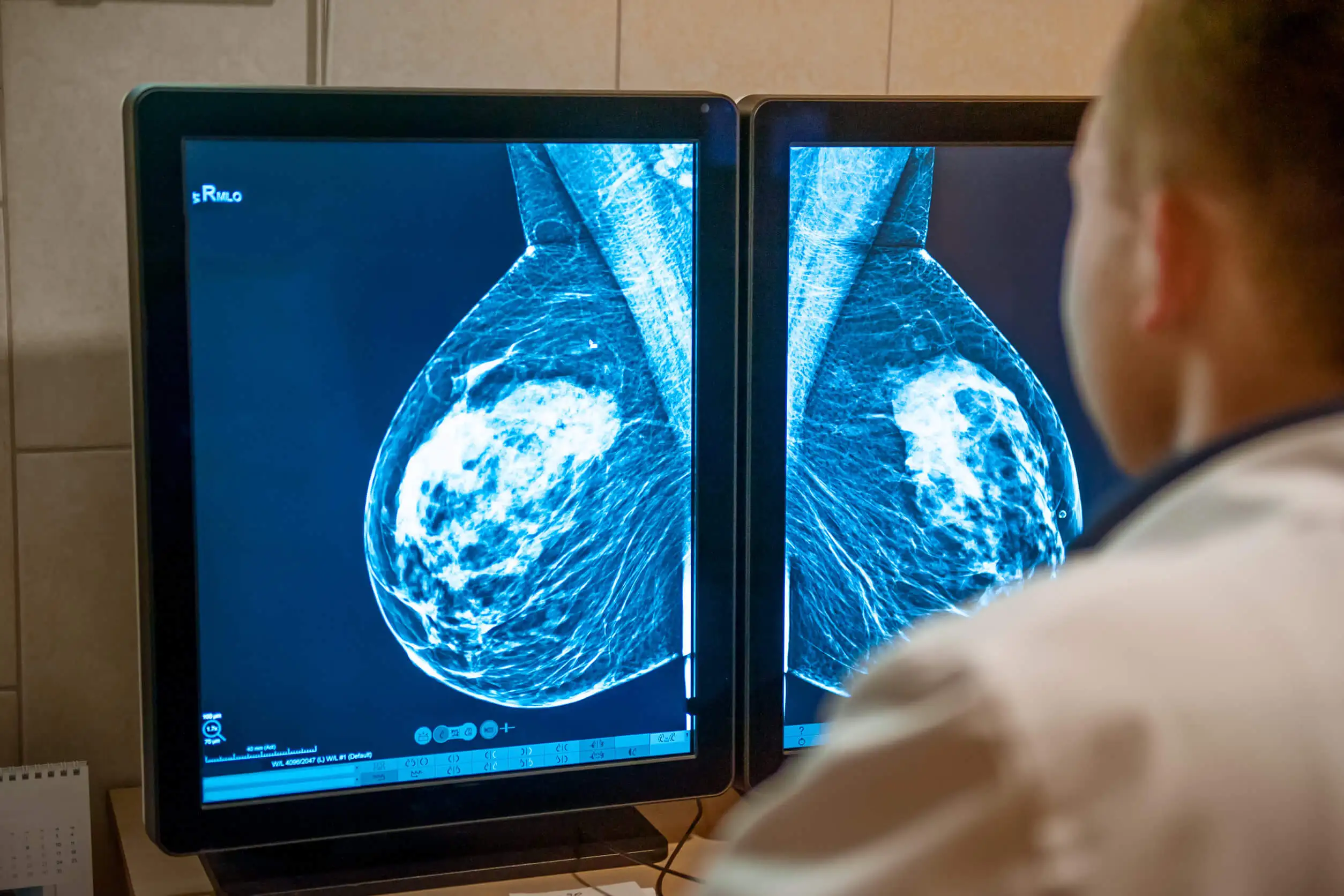Clea Shearer Beats Cancer: How Was it Identified and Treated in Time?


Reviewed and approved by the doctor Leonardo Biolatto
Clea Shearer is beginning a new stage in her life, and a fundamental part of this stage is to raise awareness among women about the diagnosis and timely treatment of breast cancer. The Netflix star is a survivor of the disease, which was detected a year after noticing a sign she had ignored at the time.
It has been 7 months since the host of The home edit informed the public of the disease and began the battle to free herself from breast cancer. The journey consisted of operations, cancer medication, and radiation.
Although the certainty of carcinoma was devastating news, the host decided to take control and save her life:
If I hadn’t taken this upon myself, I would be in a completely different situation. -Clea Shearer’s Instagram
Clea Shearer’s suspicion materialized into a diagnosis
In the summer of 2021, her body revealed the first sign, but the warning didn’t sink in for the streaming platform host. She considered the lump in her breast to be no cause for distress; besides, there were no other indications that something was wrong with her health.
At the end of February 2022, a breast self-examination set off the 40-year-old’s alarm bells. It was no longer 1, but 2 lumps that she compares to a rock. To rule out any suspicion, she discussed it with her physician and immediately continued getting evaluations.
Initially, they performed a mammogram, but it was necessary to complement it with an ultrasound. The ultrasound report showed worrying images, thus leading to an urgent triple biopsy. Everything happened on the same day: March 8, when the tests confirmed to the professional organizer that she had cancer.
We think you may be interested in reading this, too: A New Study Identifies Mouth Bacteria that May Cause Colon Cancer
Breast cancer: The type of cancer that affects women the most
Uncontrolled growth of breast cells causes breast cancer. This is how the American Cancer Society explains it, referring to the palpable lump visible on an X-ray.
There are several types of malignant tumors in the breast and several stages. Ductal carcinoma in situ (DCIS) and invasive carcinoma are the most common types.
There are also less common types, such as angiosarcoma and giant fibroadenomas. The former presents with painless purplish nodules and the latter is a tumor with a risk of necrosis and ulceration, according to the Revista Venezolana de Oncología and the Revista Chilena de Radiología.
A bibliography related to the disease emphasizes that breast cancer occupies the second position of lethality among women. For its part, the World Health Organization (WHO) points out that, by 2020, the rate of deaths associated with this disease will be reduced by 40% in some countries.
Against this backdrop, a WHO campaign promotes early detection, timely diagnosis, and comprehensive management of breast cancer, all with the aim of reducing the annual rate of deaths due to this disease.

Detection
It is precisely the early discovery of breast cancer that is the best way to prevent it. Although self-examination has not proven effective in reducing mortality, this is listed as a diagnostic method often responsible for the first alert.
Mammography, ultrasounds, and magnetic resonance imaging are listed by the Revista Médica Sinergia as other methods for a medical opinion regarding cancer.
In settings with sufficient resources, the Pan American Health Organization (PAHO) suggests scheduling a mammography screening every 2 years. For settings whose resources limit imaging, a clinical examination is an option. The starting ages for these consultations vary according to each country’s health guidelines.
Risk factors for breast cancer
Breast lumps tend to be considered normal because most are benign and do not spread outside the breast. However, these lumps increase the likelihood of oncologic conditions.
Circumstances that increase risk include age, family history, genetic mutations, and other previous breast conditions, according to information from the Centers for Disease Control and Prevention.
Breast cancer is more common in women, but men can get it. too.
Symptoms that should not go unnoticed
Shearer’s lack of family history and her age made her think a cancer diagnosis was impossible. But from detection onward, the symptoms became more evident.
References from the Mayo Clinic and the journal ARBOR include the following among the symptoms of breast cancer:
- Axillary lumps
- Nipple inversion
- Swelling of the arm
- Nipple discharge
- Breast lumps or thickening
- Redness and holes in the skin of the breast
- Crusting and scaling of the areola and breast skin
However, doctors agree on the possibility that the patient may confuse the signs, taking into account the benign tumors in the breasts before menopause.

What was the treatment Clea Shearer received for breast cancer?
One month after detection, Clea Shearer underwent a 9-hour surgery in which a bilateral mastectomy was performed. A week later, she was admitted to the operating room again for another operation, because the skin began to necrotize.
20 weeks of chemotherapy followed with Adriamycin ® and Paclitaxel. This was complemented by 5 weeks of radiation and hormone therapy, which together triggered potent side effects.
The National Cancer Institute details that such reactions occur when treatment affects healthy organs and tissues. In general, patients tend to experience the following:
- Pain
- Fatigue
- Anemia
- Alopecia
- Constipation
- Lack of appetite
In the midst of treatment, the professional organizer also got COVID-19.
Like this article? You may also like to read: Testicular Cancer: The Disease that Borussia Dortmund’s Sebastien Haller Has
Disease beaten, Clea Shearer is ready for her new life
Clea Shearer “rang the bell” and is cancer-free. It was a tough year and the artist is aware that the fight is not yet over and that now more than ever it’s necessary to heed the warnings.
She wants to make her case a useful experience, which will encourage women to dedicate more time to their health. To this end, she launched the Clea Shearer Breast Cancer Research Fund, an organization that promotes early detection through accessible services.
While she publicizes her campaign, Shearer plans to enjoy spending time with her family, friends, and the new opportunity that life is giving her.
All cited sources were thoroughly reviewed by our team to ensure their quality, reliability, currency, and validity. The bibliography of this article was considered reliable and of academic or scientific accuracy.
- Ahmad Aamir. Cáncer de mama, metástasis y resistencia a las drogas. Avances en Medicina Experimental y Biología. Vol. 1152. Estados Unidos; 2019. https://www.researchgate.net/profile/Leroy-Lowe/publication/335437270_Health_and_Racial_Disparity_in_Breast_Cancer/links/5d7bbe914585155f1e4bcc05/Health-and-Racial-Disparity-in-Breast-Cancer.pdf#page=64
- Aparicio M, Bonal E, García J, Martín R, Santos J. Tumor filodes de la mama: características clínicas, en imagen y anatomopatológicas a propósito de 18 casos. Revista Chilena de Radiografía. Vol. 13. Núm. 2. pp. 90-97. Chile; 2007. https://www.scielo.cl/scielo.php?script=sci_arttext&pid=S0717-93082007000200008
- Cáncer de mama. Clínica Mayo. Estados Unidos; 2022. https://www.mayoclinic.org/es-es/diseases-conditions/breast-cancer/symptoms-causes/syc-20352470
- Cáncer de mama. Organización Mundial de la Salud. Suiza; 2021. https://www.who.int/es/news-room/fact-sheets/detail/breast-cancer#:~:text=Cerca%20de%20una%20de%20cada,como%20consecuencia%20de%20esa%20enfermedad.
- Cáncer de mama. Organización Panamericana de la Salud. https://www.paho.org/es/temas/cancer-mama
- Clea Shearer. Instagram. https://www.instagram.com/p/CcD2LjqpgKx/
- ¿Cuáles son los factores de riesgo del cáncer de mama? Centros para el Control y la Prevención de Enfermedades. Estados Unidos; 2022. https://www.cdc.gov/spanish/cancer/breast/basic_info/risk_factors.htm
- Doxorubicin (Adriamycin, Rubex). https://es.oncolink.org/tratamiento-del-cancer/oncolink-rx/doxorubicin-adriamycin-rubex
- Efectos secundarios del tratamiento del cáncer. Instituto Nacional del Cáncer. Estados Unidos. https://www.cancer.gov/espanol/cancer/tratamiento/efectos-secundarios
- Espinoza Ramírez M. Cáncer de mama. Revista Médica Sinergia. Costa Rica; 2016. https://www.medigraphic.com/pdfs/sinergia/rms-2017/rms171b.pdf
- López R, Mora E, Prince J, Reigosa A, Saldivia F, Vegas Y. Angiosarcoma de la glándula mamaria: Presentación de un caso y revisión de la literatura. Revista Venezolana de Oncología. Vol. 17. Núm. 1, Venezuela; 2005. https://www.scielo.cl/scielo.php?script=sci_arttext&pid=S0717-93082007000200008
- Mujer y cáncer. Cáncer de mama. Revista ARBOR Ciencia Pensamiento y Cultura. Vol. 191-773. España; 2015. https://arbor.revistas.csic.es/index.php/arbor/article/view/2037/2531
- Paclitaxel (Taxol ®) https://es.oncolink.org/tratamiento-del-cancer/oncolink-rx/paclitaxel-taxol-r
- ¿Qué es el cáncer de seno? Sociedad Americana Contra el Cáncer. Estados Unidos. https://www.cancer.org/es/cancer/cancer-de-seno/acerca/que-es-el-cancer-de-seno.html
This text is provided for informational purposes only and does not replace consultation with a professional. If in doubt, consult your specialist.








